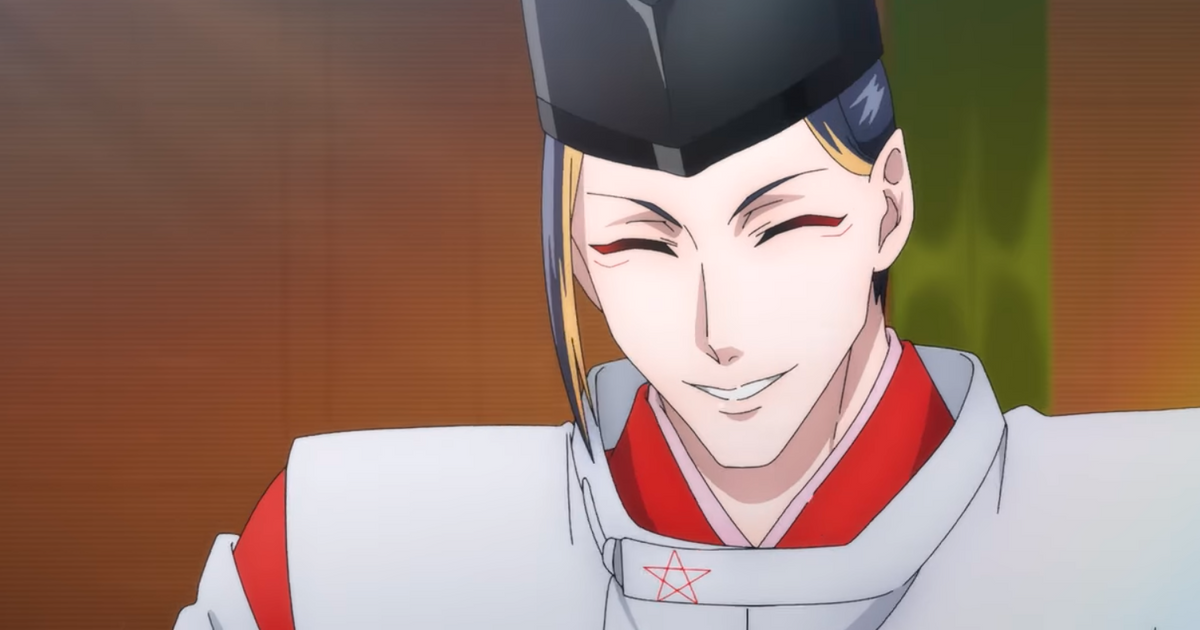It’s not unusual for historical figures to be the subject of many fictionalized stories and adventures. Netflix’s Onmyoji is not an exception, as it features historical characters in a fictional world where demons, yokais, and vengeful spirits exist. Here are all the historical figures in the Onmyoji anime on Netflix to get to know more about the characters and their legends.
RELATED: The Best Historical Anime to Watch
Here Are All the Historical Figures in the Onmyoji Anime
In addition to various drama and film adaptations, the world of Onmyoji has been explored in mobile and computer games starring familiar characters like Abe no Seimei and Minamoto Hiromasa.
These characters are considered historical figures in Japanese history and folklore whose lives have fascinated many people to this day.
The following are all the historical figures in the Onmyoji anime on Netflix:
Abe no Seimei Is the Most Famous Onmyoji of His Time
Abe no Seimei (Abe Seimei) is the leading Onmyoji of his time. He also goes by the name of Qingming in the Chinese version of Onmyoji (Dream of Eternity).
Seimei is known as a genius to many due to his successful career as an astrologer and a diviner.
He held a significant position in the imperial court, and he was tasked with foreseeing the gender of unborn babies, conducting exorcisms, finding missing objects, deducing celestial phenomena, and crafting wards, just to name a few.
According to legend, Abe Seimei’s magical aptitude is thanks to his supernatural lineage. It is said that his mother was a kitsune (fox) named Kuzunoha, who married his savior (Abe no Yasuna), making Seimei half-yokai.
There’s a Seimei Shrine located in Kyoto, where people can come and visit to pay their respects to the legendary diviner.
Minamoto Hiromasa Is a Heian-Period Court Musician
Not only was Minamoto Hiromasa a court musician, but he was also the eldest son of Prince Katsuakira and the grandson of Emperor Daigo, the 60th emperor of Japan based on the traditional order of succession.
His mother, on the other hand, was none other than Fujiwara no Tokihara, who served as Emperor Daigo’s minister during the Heian Period.
Minamoto Hiromasa has different monikers, and some of them are Hakuga no Sanmi, Lord Autumn after the Autumn Palace, and more.
He was a master of kangen, an orchestral gagaku, and eventually, he received the infamous flute called Ha Futatsu from the Suzakumon Gate’s demon and the biwa called Genjou from the Rashomon Gate.
According to the Japanese aristocrat and statesman, Fujiwara no Sanesuke, Hiromasa was a poet and a writer, but he neglected his duties as written in his diary, the Shoyuki.
Kamo no Yasunori Is Abe no Seimei’s Master
Unlike other onmyoji who underwent formal training, Kamo no Yasunori could perceive demons naturally.
There’s a legend that says Yasunori, at the age of 10, was able to impress his father with his sign of onmyoji talent when he accompanied him to an exorcism.
Aside from being an onmyoji, Kamo no Yasunori was also an inyoka (the Yin and Yang school of philosophy). Like his father, Yasunori excelled in the art of onmyodo, which he passed on to Abe Seimei and his son.
While Seimei inherited his skills in astrology and divination, his son took on the lesser-known task of creating calendars.
Ashiya Doman Is Abe no Seimei’s Greatest Rival
The interesting legend about Ashiya Douman has been brought to life in various kabuki plays and traditional Japanese narrative music.
In most Japanese literature, Ashiya Doman is portrayed as Abe Seimei’s greatest rival, who would often trouble Seimei with devious plans to kick him out of his high-ranking position in court.
Not to mention, Ashiya Doman’s employer had a huge grudge against Abe Seimei’s employer, making things worse.
Ashiya Doman is also known as Doma Hoshi, although there are stories that they are two different men who existed in the past.
The Imperial Prince Atsumi
Atsumi is the 8th prince of Emperor Uda, the 59th Japanese emperor. At the age of 15, he became an Imperial Prince, as designated by the governor of Kozuke Province.
He has a Buddhist name called Kakushin after he became a monk in 950 in Ninna-ji Temple.
Aside from being familiar with the arts, Atsumi also had a significant role in Japanese music and dance choreography.
In fact, he did a lot of choreography for traditional Japanese court music such as Kocho (Butterfly) and Engiraku (celebratory dance).
All of these historical figures within the Onmyoji anime lived fascinating lives; hence, it is understandable that producers and/or creators are continuously exploring their lore.
Want the latest on all things anime? Make sure you follow us on Twitter!
READ NEXT: Here's Where You Can Read the Onmyoji Manga Online







